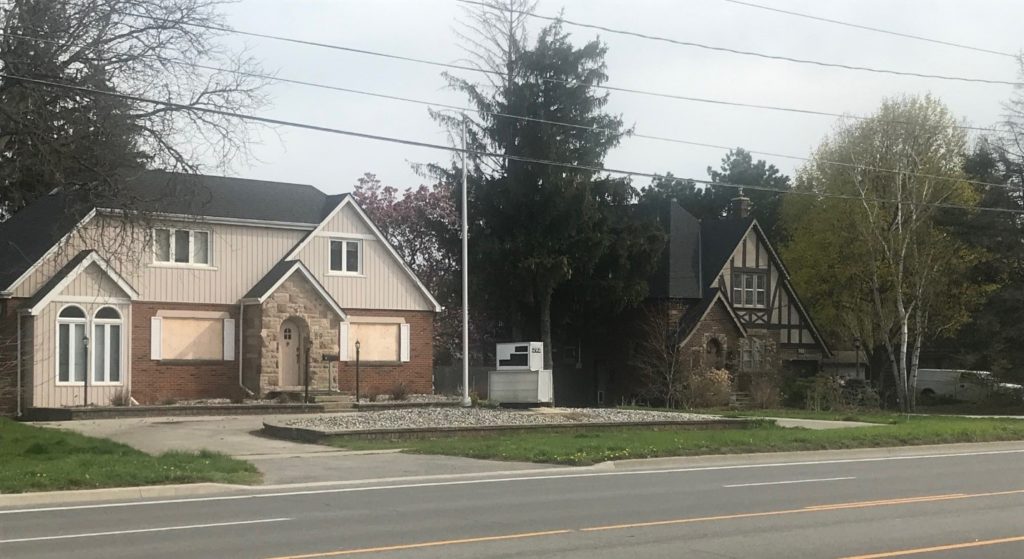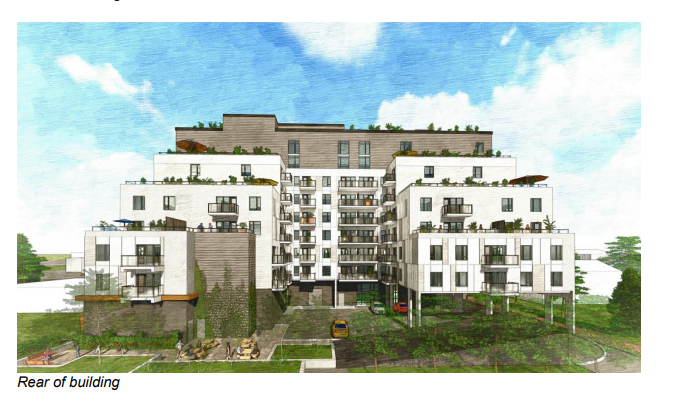The verdict was clear. Neighbours surrounding a proposed nine-storey building in Aldershot did not like what they saw. Their main reason was the height of the building to be located at 284 and 292 Plains Road East.
Each of the neighbours who spoke at a virtual public meeting the last week of April condemned the development plan. They repeatedly pointed out that the city’s new Official Plan only permits six storeys.
“The feedback from everybody is that it’s too tall. It’s too much density for a community that is not welcoming it,” said one neighbour.
The proposed building would be situated on the south side of Plains Road to the west of Filmandale Road, putting it directly in front of the low-density homes on Merle Avenue to the south.

“The overwhelming sentiment on our street is we don’t want a building of this size in our area. What is the benefit of this building, which most people consider too tall,” said one Merle homeowner.
The discussion took on an emotional tone when the neighbour immediately to the east referred to the development as “fascist architecture, like what Mussolini did in Italy. It’s in your face.” He said the tall building will ruin the neighbourhood. “It will look like the Gardiner Expressway…haphazard condominiums that have no respect for nature.”
“I realize things have to change, but it feels very greedy to go for nine [storeys],” said another resident.
The developer countered that Plains Road is not the same street that they knew years ago. It is now part of an intensification area and is “within spitting distance” of the GO station.
“Plains Road is going through a bit of a transition in terms of its evolution. It’s transitioning away from the low scale one -and two-storey buildings to more mixed-use, mid-rise building forms and we’re looking to follow that lead,” said consultant Martin Quarcoopome.
The point was reinforced by Councillor Kelvin Galbraith.
“What’s driving development to Aldershot is the fact that Plains Road has been identified as an urban corridor. It’s gradually changing into an urban strip with developments such as this…with condominiums moving closer to the street. We want to try to slow traffic and bring more retail and people to make it more of a vibrant urban street, not just a through-way corridor like it used to be [as Highway 2].”
Other Merle residents expressed concern about headlights from cars at night, exhaust fumes from the new building’s rear parking area, and privacy.
The developer pointed out that existing large trees along the rear fence line would be preserved and more trees would be added. “We have to do a good job trying to mitigate any impacts that we would cause on these properties. We need to be very mindful of that. One of the ways is to push the parking away as far as possible from our neighbours to the south.”
Other neighbours talked about traffic challenges on Plains Road and the difficulty people may have making left turns in and out of the proposed building. They worried that the additional traffic might create safety issues for nearby schools. They complained about the impact on their property values, loss of sunlight, and potential parking overflow on to their nearby streets.
The meeting had been arranged by Corley Developments to gauge public feedback prior to submitting a formal application to the city. The developer reminded the attendees that the final plan for the building is “not even close to being finished” and that their input will be taken into consideration, but they also said that they intend to proceed with an application to the city “in the near future.”
The proposed building was described in some detail as nine storeys along Plains Road, tiered down to three storeys at the rear. Included would be roof-top terraces. Eight townhouse-like homes would be situated along the west side of the building and the western portion of the front. Three levels of underground parking would be provided. The building would accommodate 156 residential units.
The overall tone of the meeting was captured by one neighbour. “Over-development, way too dense, too many people.”






